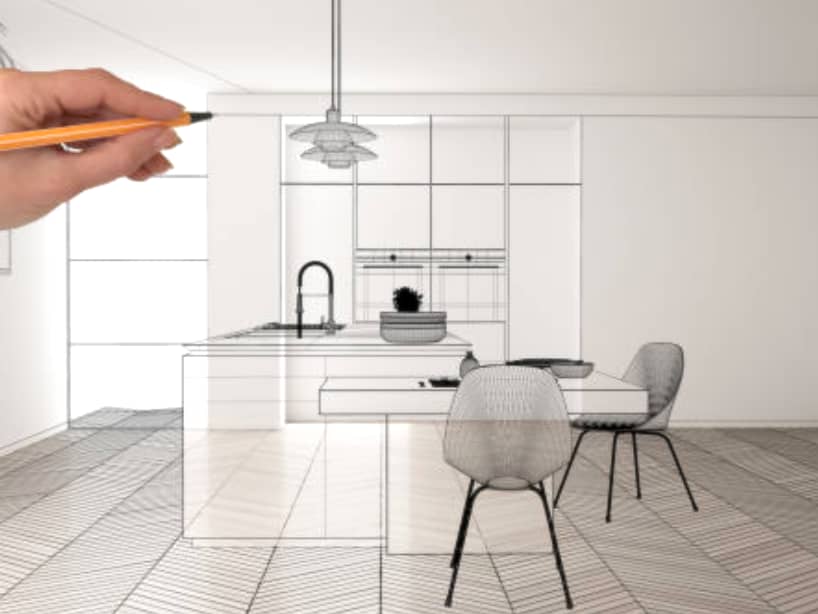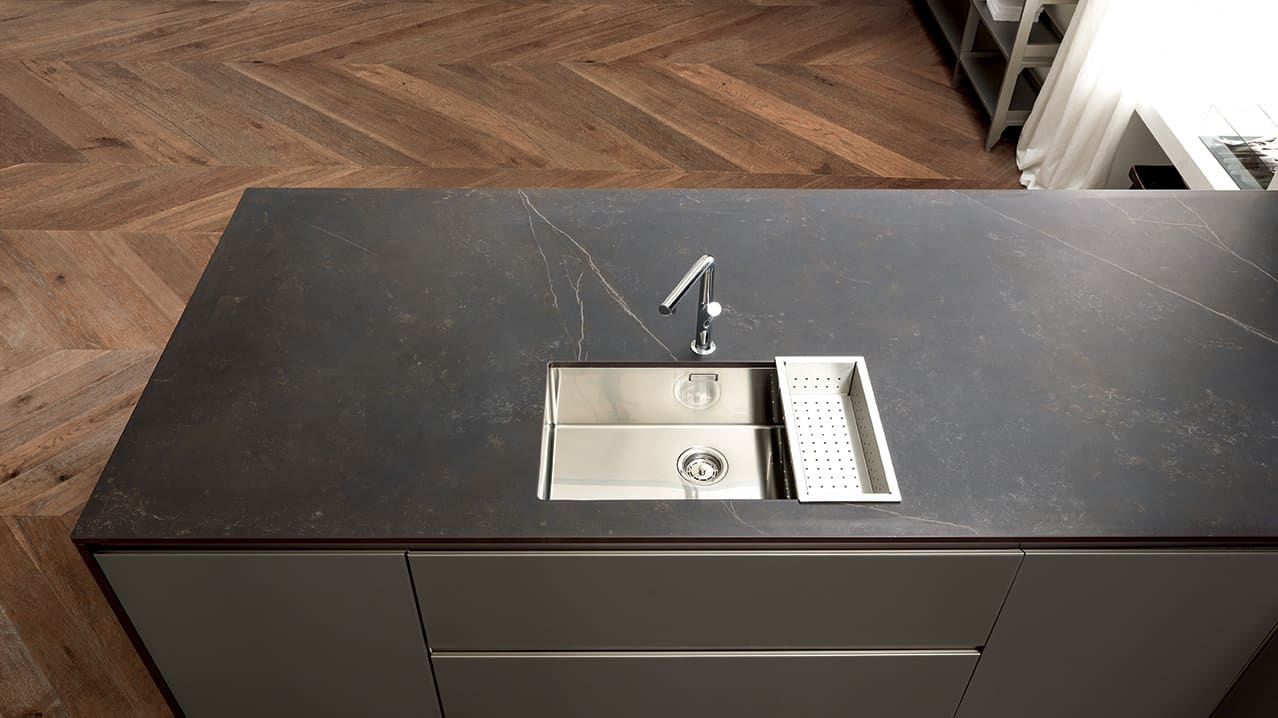The choice of a kitchen counter top should be considered carefully. When you have to decide which is the best counter top to invest in for your kitchen, there are a lot of factors to consider.
A worktop is not just a question of good looks and design when it comes to fulfilling the style of modern, contemporary and classic kitchens. It must also be functional, practical and, above all durable. For Febal, we have a variety of materials available which can effectively fulfil any requirement. The goal of worktops is to balance out the furnishing with the rest of the kitchen. The market has been revolutionised by the introduction of elaborate, technologically advanced materials.
Although it can be said that progress has contributed to bringing technology into the kitchen as well, such a broad and varied offer has undoubtedly made it more difficult to choose the perfect kitchen top. It seems like decades have passed since the days when buying a kitchen worktop was limited to choosing the colour of a laminate. This is abundantly clear when you take a look at the worktops found in old used kitchens where faded and unpretentious work surfaces were brought into the home.
The satisfaction that a good worktop gives to true kitchen enthusiasts is priceless. So, now there is just one question left to ask: what material is a Febal kitchen top made of? It consists of a wood particle panel, covered with high pressure laminate (HPL). Hard-wearing, compact, uniform, non-porous, hygienic and anti-static are just a few of its features.
Are you looking for a top that can stand up to intense daily use? And do you want it to be affordable? Then, choose laminate. Kitchen tops made from this material are in fact more affordable, safer and practical, resistant to stains and easy to clean. They are perfectly suited to contact with food and come in an infinite range of colour combinations. Available with glossy, grooved, embossed and tranché surface.
1. QUARTZ kitchen top
Quartz tops are made of slabs formed by a mixture of quartz and resins that offer considerable benefits and are also extraordinarily practical. Tops in this material are flexible and can reach lengths of up to 3 metres. The choice of quartz for your kitchen top guarantees the use of a material which, albeit more expensive than laminate, offers excellent performance. It is extremely resistant to scratches and knocks and is long-lasting and stain resistant. This translates into practical use in an environment where surfaces are subject to intense and continuous pressure. Quartz tops can be cut to measure based on the size and layout of your kitchen.
2. OKITE® tops
Okite® tops mainly consist of natural quartz with the remaining part made up of acrylic resins and coloured pigments. This type of mixture guarantees excellent performance and resistance against scratches, attacks by chemical agents, liquid and heat absorption, and is five times more resistant than granite. Okite® offers you a 10-year product warranty from the time of purchase, in addition to the two-year legal guarantee. The surface is extremely hygienic and antistatic, does not attract dust, while also guaranteeing consistency and good heat stability. This is a valid alternative to natural stone. Tops in Okite® have no pores into which dirt and bacteria may seep. NFS certification which states that Okite® is a hygienic, anti-bacterial product and states that Okite® products are hygienic and suitable for use with food.
3. MARBLE – GRANITE work tops
I marble, compact consisting of medium hard materials that are easy to polish, are processed to reduce the natural porosity and are then, treated with water-repellent and stainproofing products. Granites, which are also compact and easy to polish, are made of ultra-hard minerals and generally feature more dynamic and varied colours. Moreover, they are much more resistant than marbles to surface abrasions. Granite, which costs less than marble and is less precious, is in fact an extremely resistant product. When used for kitchen tops, it undergoes a special process to create an irregular surface and, thereby, enhance its natural look.
In this case, this means brushed granite. Finally, composites are aggregates of marble fragments bound together with resins and cements. Highly appreciated by anyone who likes a natural look in the home that fits in well with more traditional style kitchens.
4. DUPONT™ CORIAN® kitchen tops
This is a composite material that is non-porous and uniform, consisting of a third acrylic resin and two thirds mineral substances. The main component is the aluminium trihydrate mineral derived from bauxite. It has been used for furnishing purposes for some years now. Its use as a kitchen top ensures a pleasing tactile sensation, but above all great performance: it is non-porous, robust and resistant to scratches and humidity, can be repaired, has no joints where dirt can be deposited, is ecological and hypoallergenic.
A material that can take on any shape and has demonstrated its reliability and ability to innovate with colours for decades, as well as technology and environmental sustainability.
5. STEEL top
This top consists of a chipboard panel covered in AISI 304 2B steel sheet with a scotch brite finish and 1mm thickness. It is stain-proof and highly suitable for hygienic treatments of kitchen foods. Stainless steel tops feature high resistance against wear and are not affected by high temperatures, although they do require constant maintenance and cleaning. One of the advantages offered by stainless steel tops is that they can be directly soldered to sinks and hobs, for a seamless finish and eliminating joints where dirt deposits may form. From a visual point of view, this type of top adds a “professional lab” and contemporary touch.
6. GLASS kitchen top
This top consists of a sheet of extra-light glass with a variable thickness of between 15mm and 19mm. It is coloured and has undergone a treatment to make it resistance to knocks. Tempered glass tops are obtained from a slab of glass, heated at a high temperature until it softens. Extracted from the furnace, it is quickly cooled with high pressure jets of cold air, which only stiffen the external surface, while the inside cools slowly. This procedure, which creates tempered glass, is used to improve the top’s mechanical resistance against flexing and thermal shock. If a glass top breaks, it shatters into lots of small, blunt pieces. For this reason, glass is considered a safe and robust product. This material makes a bold visual impact when used on work tops, but does not offer a very good performance: scratches are very visible.

